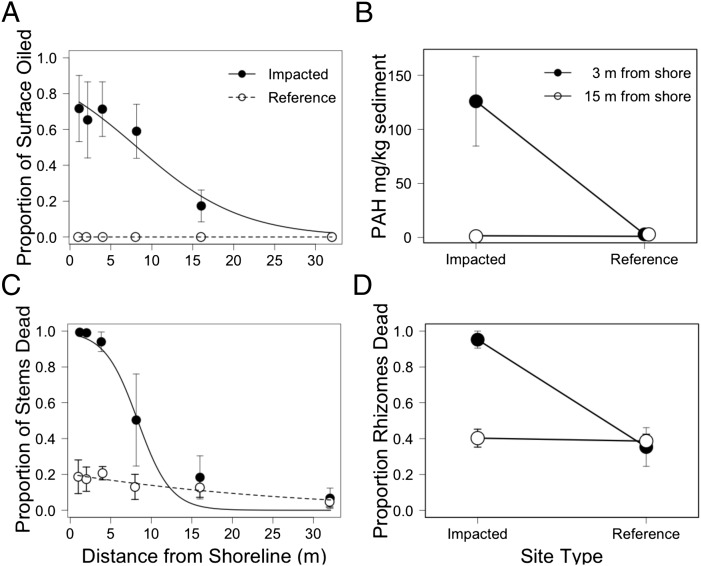Fig. 1.
Surveys of oil cover and cordgrass across transects at impacted (●) and reference (○) sites in October 2010. (A) Change in the proportion of plants oiled with distance from shoreline (defined as marsh platform edge). (B) Sediment PAH concentrations at three impacted and three reference sites at 3 m and 15 m from the shoreline. The more than 100-fold greater difference between concentrations at reference and impacted sites was not significant at inshore regions. (C) Change in the proportion of aboveground plants dead with distance from the marsh edge. A significantly greater proportion of the surface was oiled at impacted than at reference sites (P < 0.001), but oil coverage declined rapidly with distance reaching less than 50% coverage by 8.2 m from the marsh edge. There was also a greater proportion of plants dead at impacted sites (confirming our site characterizations) (P < 0.001). However, concomitant with the reduction in oil coverage with distance from shoreline, the proportion of dead plants at impacted sites also decreased with distance from the marsh edge, with the proportion of plants surviving exceeding 50% beyond 8.3 m from shore. Data illustrated in A and C are means from replicated surveys (n = 5) at three different reference and impacted sites. (D) Change in proportion of rhizomes dead at 3 m and 15 m distances from the shoreline at reference and impacted sites. There was a significant interaction between site type and distance from shore (P = 0.0003). This result is driven by the near-shore die-off zone where rhizome mortality was 63% higher at impacted than at reference sites. Data illustrated in B and D are means from three different reference and impacted sites (n = 3). Error bars are SEs.

